In 2008, Yes! we could and Yes! we did elect Barack Hussein Obama President of the United States. We put a Black man in the Oval Office. First time ever.
It was a real milestone. The world at-large was so sure that under an Obama Administration the US would finally live up to all the “protector of the free world” hype we’d been spewing for decades, they jumped the gun and gave the new Pres the 2009 Nobel Peace Prize. Democrats/Leftists took his victory as an indication the government was back on-track for social services, civil rights, gender equality, education, climate change . . . all those bleeding-heart liberal causes. Republicans/the Right reacted by getting their collective panties in a racist twist, turning the 2008-2016 Congresses into the hands-down least effective legislative bodies in our nation’s history, and widening the color-coded cracks in our society – a weakness a certain Cheetos®-headed power-grubber recently exploited to the full.
How did Obama win the race to become the 44th President of the US of A? According to myriad articles on the subject, top reasons include:
- a plan of action to help the middle class
- leadership qualities, calm temperament
- stance on health care
- promise to withdraw combat troops from Iraq
- weak opponent, strong VP
- tremendous grass-roots support
All of the above certainly factored heavily. For me, though, there’s a factor missing: the power of mass entertainment. It’s thanks to the television and film industry and, specifically, thanks to 2 movie blockbusters and a hit TV show that Obama was seen as a viable candidate.
I’m not just winging it, here. I’ve got neuroscience backing me up.
The neocortex – the conscious, logical, rational part of the brain – covers higher-function bases, like sensory perception, motor commands, spatial reasoning, and language. The limbic system – the subconscious, emotional, feeling part of the brain – covered those bases before the neocortex was a thing, and still coordinates mental functions, such as habitual learning and memory formation, with sensory experience, emotional response, and behavior regulation.
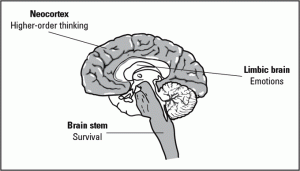
The neocortex is so enamored of itself, it believes it makes all the decisions. In fact, when it comes to handling input, the subconscious brain is on-it long before the conscious brain kicks in. We can, and often do, process and act on emotional responses without bothering to consider them rationally; in other words, without thinking about them.
It’s a handy set-up, in that it allows us to deal with multiple stimuli simultaneously. It also means that while everything goes through the emotional wringer, only a select few items are subjected to the thought process. The real decision-maker isn’t our conscious, but our subconscious mind.
This decisive predominance of heart over mind (ok, limbic system over neocortex . . . whatever) is epic. We imagine we’re basing our decisions on a cognitive analysis of what we read or hear (have read to us) on the radio and telly. Not so. The subconscious is illiterate. It doesn’t even understand words very well. Information reaches the subconscious via the senses. Tons of information. The subconscious processes about 40 million bits of info per second. Lagging behind, the conscious mind maxes out at about 4,000 bits per second. The subconscious doesn’t focus for long, though. Give it 7 seconds on the same input, it clocks out until some new input comes along.
The modern subconscious receives the bulk of its input through the sense we rely on most: sight.
We see lots of stuff on TV. In 2014, the average American had their eyeballs glued to a TV set 4.7 hours a day. We also see stuff at the movies, larger-than-life. About 70% of the population of North America (US and Canada) goes to the cinema at least once a year. And all the entertainment-stuff we watch comes packed with limbic-friendly, audio-visual impact.
Using my neocortex to logically extrapolate from this info, it’s obvious that what we see on the big and little screens must condition – to some degree – how we operate. As an example, here is Captain Kirk of the Starship Enterprise on his cell phone – sorry, on his communicator.
There can’t be too many people on this planet who haven’t noticed the remarkable similarity between the fictional and the practical device. No accident. Martin Cooper, head of the team that developed the first handheld mobile phone, happily admits it was watching Kirk use his communicator on the TV show Star Trek that gave him the cell-phone idea. Cloning, hover-boards, nano-technology, self-driving cars all made the transition from screen-fantasy to reality. It’s not the correlation between fiction and invention I’m on about. It’s how images of imagined futures on the big and small screens prep us to accept those futures as feasible.
It’s my contention (though not mine alone) that the dynamic relationship between television programming, theatrical releases, and our perception of reality helped pave the relatively smooth path Obama took to the White House . . . and added more potholes to the rocky road Hillary Clinton trod to an electoral dead end.
The first film portrayal of a Black Pres was 7-year old Sammy Davis, Jr.’s in Rufus Jones for President (1933). Rufus’ inauguration is a dream. When he is awake, the racist attitudes of the decade prevail.
From 1933 to 1997, Black presidents appeared on-screen five times more; as the real-deal in the 1983 feminist sci-fi Born in Flames and the 1972 adaptation of Irving Wallace’s The Man (with James Earl Jones as an heroic Black president with real moral authority), in a comedy skit, in a comedy series, and in an embarrassing turn by Judy Garland in black-face singing a song on the subject.
In 1997, the run-away box office success The Fifth Element gave us Tom Lister, Jr. as President Lindberg, the highly capable commander-in-chief of planet Earth. The following year, the wildly-popular Morgan Freeman showed up as Tom Beck, another competent and this time emotionally-endearing President, in the film Deep Impact.
On the heels of these cinematic breakthroughs came the hit television series 24. Actor Dennis Haysbert owned the role of David Palmer, a Senator who becomes America’s noble, intelligent, brave, terrorist-fighting Commander-in-Chief.
It’s a lead role, ranked 4th in number of appearances for the show, and Palmer survives 5 seasons before he’s assassinated. In the words of critic Charles Taylor, Palmer displays the “magnetism, brains, resolve, compassion and willingness to make tough calls we dream of in a president.” It’s worth noting that after Palmer’s assassination, his brother Wayne (D.B. Woodside) was elected, keeping the color-scheme of the Oval Office intact.
Once Hollywood’s trio of wise and wonderful Black leaders-of-the-free-world had America by the collective limbic system, it was a done deal. No going back for Black presidents on the screens (Danny Glover in 2012, Jamie Foxx in White House Down, Samuel L. Jackson in Big Game. . .) and a giant step forward for diversity in American politics. I don’t contend that putting a few capable Black presidents on the screen changed the essentially racist fabric of our society. I contend that putting a few capable Black presidents on the screen in a context that triggered positive emotional reactions effectively took the once-ludicrous idea of a Black man in the White House and embedded it in the American subconscious with all the political cachet of David Palmer, Tom Beck, and President Lindberg rolled into one.
A female president actually beat Black (male) presidents to the silver screen. In the 1924 silent The Last Man on Earth, all the men die of a mysterious disease, forcing women to take on the responsibilities of social governance.
A solid 29 years later, Ernestine Barrier appeared as Madame President in Project Moon Base. In the screenplay by the brilliant – and, let’s face it, misogynistic – Robert A. Heinlein, the female officer in charge of the mission incessantly turns to her male subordinate to save the day. When they (naturally) decide to marry, she (naturally) asks that her husband be promoted, so she won’t outrank him.
The Madame President role is nothing more than a shock-value cameo at the end, Heinlein’s way of saying, “You want proof this is the future? Forget rockets and moon landings. Look – there’s a woman president!”
Beyond that, it’s thin pickings and just about all comedy. The women presidents portrayed by Polly Bergen in Kisses For My President (1962), Loretta Swit in the Brit film Whoops Apocalypse (1986), Joan Rivers in the Aussie box-office failure Les Patterson Saves the World (1987), and Christina Applegate in Mafia! (1998) range from invisible to inept to farcical to ditzy. They are a joke.
The exceptions are Air Force One (1997), where Glenn Close gets to be a darn-good acting President while the real President fights bad guys in the stratosphere. A woman has the top job in the 2001 sci-fi film Perfect Lover, as well, but it’s a dystopian future, where men are subservient to women.
The first serious, elected female president finally appeared on-screen in 2012 with Iron Sky. Another 4 years, summer 2016, and we saw a second just-plain President character in Independence Day: Resurgence. Neither film was well-received.
Poor reviews mean poor box office. Fantasy female presidents can’t win hearts if nobody sees them on-the-job. Besides, it takes a hit to alter the social-political landscape. If The Fifth Element, Deep Impact, and 24 had been flops, they would have done squat for improving perceptions of Black men in power, and might possibly have been a set-back.
The 2005 television series Commander-in-Chief is a case in point. C-in-C had Geena Davis as Mackenzie Allen, first female President of the United States. Allen isn’t elected, of course. She steps up to the Pres-plate from VP, when the real President dies of a cerebral aneurysm. The show started strong, but ratings flagged as President Allen was negatively compared to 24’s President Palmer, the story-line was dissed for being too family-oriented, and the writers were chastised for underestimating their audience’s awareness of current events.
Critics from the far Right complained that C-in-C was a thinly-veiled attempt to lay groundwork for a Hillary Clinton presidential run. Might have been, but if it was, it back-fired. Obama trounced her in 2008. As the Jerusalem Post speculated, television ratings “may have predicted Obama’s primary victory over Hillary Clinton, as the most recent female television president appears to have been less popular than the black leaders of 24.”
We don’t see strong, wise, brave, capable, wholly awesome female presidents on the screen, not in numbers or with any frequency. Hell, we don’t see woman in leadership roles, period. Casey Cipriani’s 2015 overview, “Sorry, Ladies: Study on Women in Film and Television Confirms the Worst” says it all.
The majority of the 13% of characters defined as “leaders” (individuals with a formal leadership role in an organization, government, or group bigger than 2) are male. Men get 96% of the crime-boss roles, 89% of business-boss, military-leader, and head-of-a-government-agency roles, 82% of the political big-wig roles, and 81% of the super-scientist/super-smart person leadership roles.
When a woman does get cast as Fearless Leader, at best, she’s superfluous and ineffectual (Glenn Close as Nova Prime in Guardians of the Galaxy (2014)). More often, she’s evil. Pop culture continually reminds us there’s something suspect and unfeminine about a woman who has achieved a position of leadership. She’s bitchy, oversexed, a ball-busting iron maiden, and/or a psychological mess. Meryl Streep/Miranda Priestly – The Devil Wears Prada. Charlize Theron/Queen Ravenna – Snow White and the Huntsman. Jodie Foster/Delacourt – Elysium. Kate Winslet/Jeanine Matthews – Divergent and Insurgent. Alfre Woodard/Black Mariah – Luke Cage. Patricia Clarkson/Ava Paige – The Maze Runner. Julianne Moore/President Alma Coin – The Hunger Games . . . I could go on. And on. And on.
In researching this post, I was struck by a random comment in one of the articles: “But the use of fictional women presidents or of minority presidents, as in more recent sci-fi flicks like Deep Impact, sets the stage for society to normalize them.”
There is an odd assumption in this statement, an odd assumption running rampant in the world. Since women and minorities are both oppressed populations, it is commonly believed that a victory for a minority group is also and automatically a victory for women. This social parallel is most often cited when the progress in question relates to African-Americans, as in the statement above. The author references a film with a positive-image Black president, alludes to other films that boast similar casting, recognizes the progressive social effects of this trend, and somehow concludes that women are also getting presidential roles and sharing in the social bounty.
We’re not.
With blessed individual exceptions (thanks, guys :)) and some rays of recent hope from a few socialized, progressive nations, this is a woman-hating, woman-fearing world. In America, as a rule, a man of any color has a better chance at inclusion, promotion, and socio-political power than any woman. Just look at the vote, fer gosh sakes. Black men won it in 1870. Women had to wait another 50 years.
People genuinely believe, apparently, that Dennis Haysbert’s portrayal of President Palmer made as much of a difference to women in this country as it did to Black men. They believe putting Obama in the White House somehow eliminated all the sexist barriers to a woman achieving the same office.
This is a dangerous fallacy. Hillary Clinton didn’t win the popular vote by 2.5 million because America is ready for a woman president. Clinton was extremely unpopular and voter turnout sucked. She got the votes because she was up against the most terrifying and morally-deranged candidate this nation has ever produced. She wouldn’t have had a prayer against a semi-sane male contender.
I believe she’d have had a better shot at winning – winning the Electoral College – if she’d run as the Republican she truly is. And had she done, I believe she’d have clinched the election if her opponent had been a truly progressive Democrat. We’ve seen a gazillion qualified, dispassionate, ruthless Ice-Queen leaders on the silver screen; our limbic brains completely accept her as a possibility. Scads of women would have followed Clinton to the Right, and American men, even the misogynists, would prefer a mature, ultra-conservative iron maiden to a socialist Jew-boy any day.
They’ll take a Margaret Thatcher. They’ll murder a Benazir Bhutto.
Until Americans start seeing wise, wonderful, and courageous women on the screens, leading their nations, the world, or the galaxy through doom and destruction to peace, joy, and prosperity, no way are we going to see women as viable cures to what ails us.

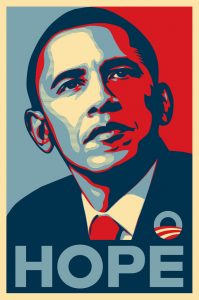
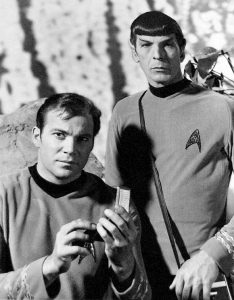
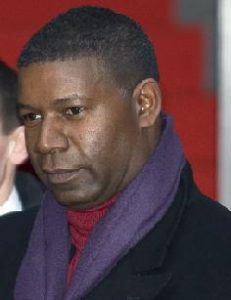
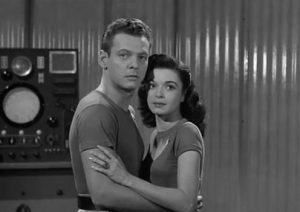
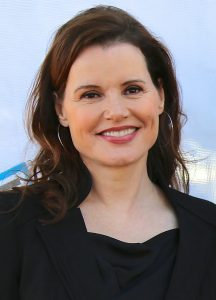
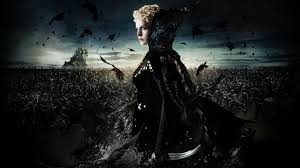

“They’ll take a Margaret Thatcher. They’ll murder a Benazir Bhutto.”
That would make a great T-shirt, though I suspect, not a best-seller. Great piece, as always, and sadly spot-on. The only tiny offering I can make to your excellent, erudite and well-argued post is in reply to this:
“In the 1924 silent The Last Man on Earth, all the men die of a mysterious disease…”
It’s not mysterious at all. It’s called fucking pig ignorance, and it kills thousands of people everyday. Alas, it’s highly contagious with no known cure.
I got rather taken up by the research on this one. It was such a thrill to find reams of confirmation for my gut-instinct theories.
But there IS a cure for fucking pig ignorance, Dec! Problem is, it’s a hard pill to swallow — and who’s gonna make ’em?
Sorry. That’s Timothy Pettigrew.
I call your attention to a comic book written in 1964 about a fictitious presidential candidate, Thomas Pettigrew. (http://publicaffairs.cua.edu/Releases/2008/08Pettigrew.cfm)
It was released biweekly, and students of Catholic parochial schools all over America had the opportunity to read it, I being one of them. It made a significant impression on me then, and I have no doubt it paved the way for me to see Barack Obama as a completely legitimate contender for the office of the presidency.
And while there are lots of examples of strong women roles (Hepburn, Hepburn, Hepburn, and Hepburn), none to my mind approximate legitimizing the idea of a woman as president, at least certainly not an elected one (sorry Glenn). So, as usual, you are right, Risa (and insightful). And it’s all too terribly, terribly maddening and sad.
Thanks for the link! Amazing comic, carefully designed for a full-impact surprise ending. And from the Catholic church, no less! Came out in ’64, just after the assassination of our first Catholic prez… wonder if that figured in?
Agreed, plenty strong roles for women (though there’s WAY more for men). Top of my head, besides Hepburn, there’s Ripley in the Alien films, no-nonsense nannies Mary Poppins and Nanny McPhee, Hermione in the Harry Potter movies, Hildy Johnson (my fave) in His Girl Friday. Yeah, but scan this list of the 50 Greatest Female Movie Characters. Which of them hold positions of power? Hermione is a smart-girl supporting role; male wizards are the main good guys, bad guys, day-savers, and headmasters. Leia is a tough princess, but ruler of nothing, and guys run the revolution and fly the missions. Some hailed Rey as a feminist icon, but even one of the screenwriters dismissed her as a “Mary Sue”; a bland, unfeasibly-perfect female character who excels at everything and never shows any negative traits. Ripley is an exploited employee. I see ONE truly strong female in the line-up — Fargo’s Marge Gunderson, lead protagonist/Chief of Police, who wields genuine authority over her doofus associates and solves the case, while 7 months preggers. Are we supposed to think 1/50 ain’t bad?
What really demoralizes me is the current proliferation of Ice-Queen roles. Hard to believe it isn’t a deliberate anti-feminist campaign when virtually every TV/film woman-in-power who actually uses her power is vicious, unscrupulous, conniving, and mega-dangerous. Casting the crème de la crème of our actresses in these roles enhances the super-scary effect of their performances on our limbic brains.
No sign of this trend stopping anytime soon. Miss Sloane is about to hit the big screen. A quality political thriller, by all accounts, dynamite script, high production values, great cast, Jessica Chastain in the title role. From the IMDB synopsis: “… a ruthless and highly successful political strategist, Elizabeth Sloane (Jessica Chastain), exposes the cutthroat world of D.C lobbyists on both sides of the gun control debate… Deploying her notorious skills – and driven by a desire to win at all costs she jeopardizes those closest to her, and puts her own career at risk.” Capable women in positions of power, what could be more frightening?